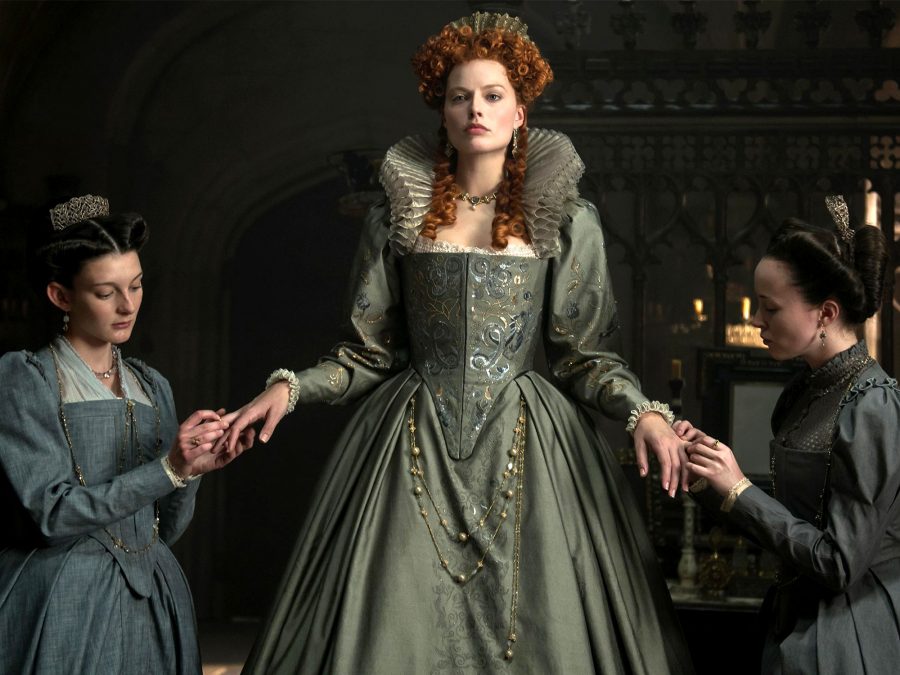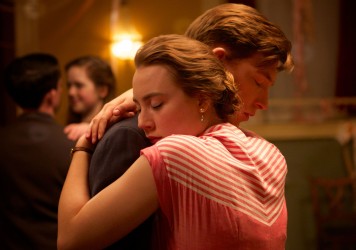Saoirse Ronan and Margot Robbie play duelling monarchs in this lifeless period piece.
There’s a reason why Saoirse Ronan is thought of as one of the best actors working today: she possesses the innate ability to make you second-guess as to whether the film you’re watching is really as mediocre as it appears. Mary Queen of Scots, from director Josie Rourke, is as stiff and studied as a fat, dog-eared library textbook, a well-meaning, information-packed drag which is all exposition and no drama.
Yet Ronan’s mellifluous and sprightly presence in the title role forces a reconsideration. How can someone who has sunk her talons so deeply into the throat of this character, has worked so hard on a better-than-convincing Scottish lilt and who is clearly taking all these fanciful, dress-up-box larks extremely seriously, be at the centre of a film in which every other aspect is a paragon of coffee table banality?
But, as the old saying goes, Saoirse Ronan’s ineffable screen magnetism can only get you so far, and so the middlebrow rot of this decorous historical runaround starts to set in.
It begins, like these matters so often do, at the end, with milk-skinned beauty Mary Stuart (Ronan) taking a diva-like last walk to the chopping block where, following a Magic Mike-style execution outfit reveal, she succumbs to the falling axe. Then, we flash back to the upstart’s late teens, where she is smuggled to Scotland from France via boat with plans to make sure she’s next in line for the throne if her cousin, Elizabeth I (Margot Robbie), fails to produce an heir.

The story consists of a lengthy battle of attrition between the formidable monarch and her feisty northern charge, made all the more complex by the fact that they are unable and unwilling to meet in person. Rourke, who awkwardly transitions over to film from a career directing for the stage, attempts to whip up tensions by highlighting the similarities between these two powerful women, whether through the self-assured manner in which they act around their preening and duplicitous male cohorts, or creating extremely strange visual rhymes.
With regard to the latter, there is one appallingly misjudged moment in which a cascade of bloody afterbirth is doubled with scenes of Elizabeth hate-twirling red paper ribbons as part of some mammoth, depressive handicraft session. It’s as if Rourke is trying too hard to embrace the visual and editing tools at her disposal, but at the expense of getting to the heart of these fascinating historical icons.
The script by Beau Willimon (adapted from John Guy’s 2005 biography, ‘Queen of Scots: The True Life of Mary Stuart’), gives focus to a number of strange details which feel like they pander too much to the progressive whims of a contemporary audience. Italian courtier David Rizzo (Ismael Cruz Cordova) is accepted as a gender-fluid nymph by the all-embracing Mary, even when her downfall is catalysed by his sexual dalliances.
Also, the film pushes hard in making the female characters seem strong to the point of omnipotence, and largely achieves this by making all the male characters vile, backstabbing, patriarchal cretins. Fans of Shekhar Kapur’s Elizabeth films, with Cate Blanchett in the lead, might find some pleasure in this handsome but strangely hollow offering.
Published 17 Jan 2019
Will Saoirse Ronan find a film worthy of her immense talent?
Not this time, alas.
An epoch-defining face-off, rendered lifeless by an unwillingness to focus on the core drama.

Saoirse Ronan is in scintillating form in this lavish period drama from director John Crowley.

A group of underdog students at an elite educational institution discover something sinister lurking beneath their hallowed school halls.

Marital woe plagues a young couple honeymooning on the Dorset coast in this Ian McEwan adaptation.